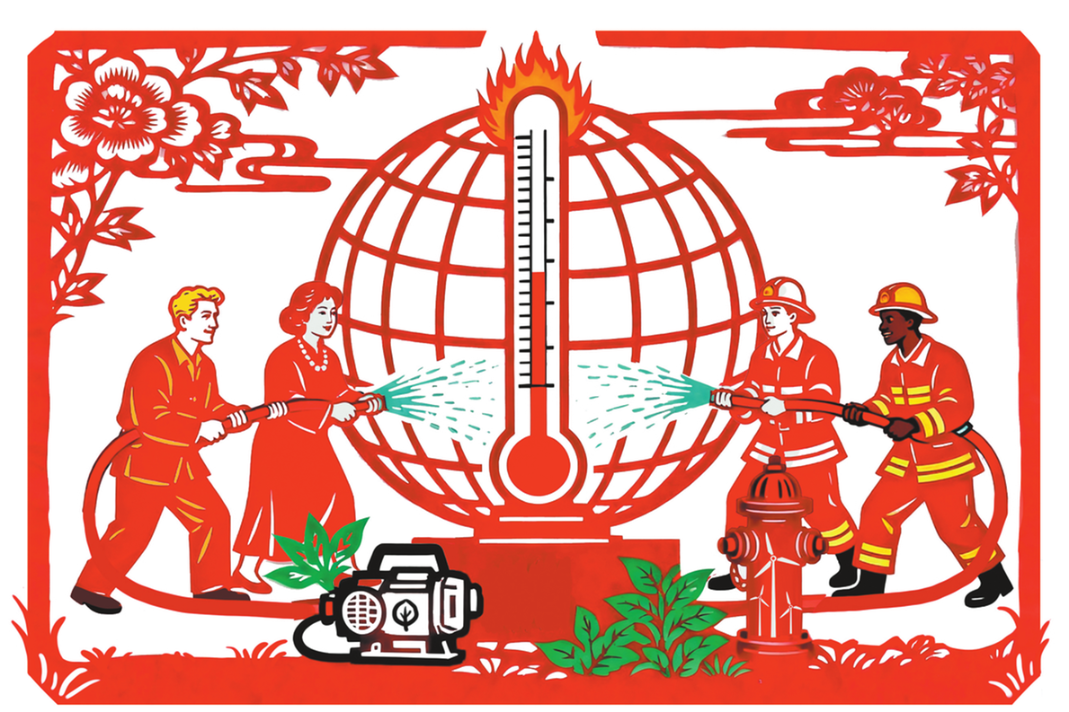Food security top priority amid climate impacts


The abrupt shift in the weather this year, from a semi-dry first half of the year to the unprecedented, widespread rainfall and flooding due to Typhoon Doksuri in many parts of China, is a stark reminder of the threat climate change poses to humankind. And since the disaster-stricken areas include some of the major grain-producing provinces, many fear food production could suffer this year.
The precipitation brought by Doksuri underscores the need for preventive measures to safeguard China's grain security. In such cases, preparedness is paramount.
That the rainfall and flooding have damaged crops or impacted the agriculture sector in other ways in several major grain-producing provinces in China has sent shockwaves through both the domestic and foreign grain markets. Since provinces such as Hebei, Henan and Shandong, all major grain producers, have been severely hit by the rainfall and flooding, the authorities need to take measures to minimize the effects of extreme weather events, whether it be unusually heavy rainfall, insufficient precipitation or extreme heat, on grain production.
In the 2022, Henan, Shandong and Hebei rank second, third and seventh in grain production in China, with more than 60 million tons, 55 million tons, 38 million tons separately. The yearly yield of each of these provinces compares with that of many grain-producing countries. For example, Henan's total grain production matches that of France and was higher than that of pre-conflict Ukraine. And while Shandong's grain output excels that of Canada, Hebei's exceeds that of Thailand.
The global rice market has witnessed persistent increase in prices, primarily due to the El Niño effect. Rice prices have been at an 11-year high, with the restrictions imposed by some countries on rice exports further propelling the surge in prices. For instance, India, a major rice producer which accounts for more than 40 percent of global rice exports, banned the export of non-basmati white rice on July 20. Other countries like the United Arab Emirates, a significant rice re-exporter, and Russia have followed suit by banning rice exports.
Besides, the breakdown of the negotiations to renew the “Black Sea Grain Initiative” on July 17 will have a huge impact on Ukraine, a major grain exporter. From the initiation of the Black Sea agreement in July 2022 till its expiry this month, Ukraine exported 32.8 million tons of grains to 45 countries, including Spain, Turkey, Italy and Egypt.
Following the collapse of the Russia-Ukraine negotiations, grain prices have been consistently rising in global markets.
Simultaneously, the evolving monetary policy of major central banks such as the US Federal Reserve is catalyzing the current and future shifts in the global market for primary commodities. While the People's Bank of China has somewhat eased its monetary policy this year, the Fed announced another rate hike on July 26, its 11th since March 2022.
The consensus in the market is that the Fed's current tightening cycle is nearing its end, and it will probably ease the monetary policy coinciding with the US presidential election next year, which could lead to an increase in primary commodity prices in the global market.
Also, China's total summer grain production this year was 146.13 million tons. Given the high summer grain output and ample food reserves, the above factors are not expected to significantly drive up domestic food prices and impact people's livelihoods.
But many countries, especially developing ones, lack the capability to mitigate the impacts of price fluctuations in the global market. While some countries can absorb the shocks of fluctuating grain prices and may not suffer much economically, many countries in the Middle East and North Africa that are heavily dependent on imports to meet their grain needs could suffer the repercussions, which could extend to the global energy market, causing energy prices to rise, affecting the global economy.
Furthermore, traditional wheat-importing nations in the Middle East and North Africa have for years relied on countries such as Russia and Ukraine for their wheat supplies. Their grain imports has already been significantly affected by the Russia-Ukraine conflict and the wave of Western sanctions against Russia, and the expiration of the Black Sea grain deal will deal a another blow to their food security. The impact of rising grain prices on the Middle East and North Africa will likely be much more than on most other regions.
In the current situation, created by the West's Cold War mentality, NATO's continuous eastward expansion, waves of Western sanctions against Russia, and other regional and global events, the interplay between dry spells and unusually heavy rainfall, grain production and prices, and global oil and energy market is becoming increasingly more impactful. So China should take proactive measures to ensure food security and closely monitor the developments in the international grain as well as energy markets.
The author is a researcher at the Chinese Academy of International Trade and Economic Cooperation. The views don't necessarily represent those of China Daily.
The opinions expressed here are those of the writer and do not necessarily represent the views of China Daily and China Daily website.
If you have a specific expertise, or would like to share your thought about our stories, then send us your writings at opinion@chinadaily.com.cn, and comment@chinadaily.com.cn.


































